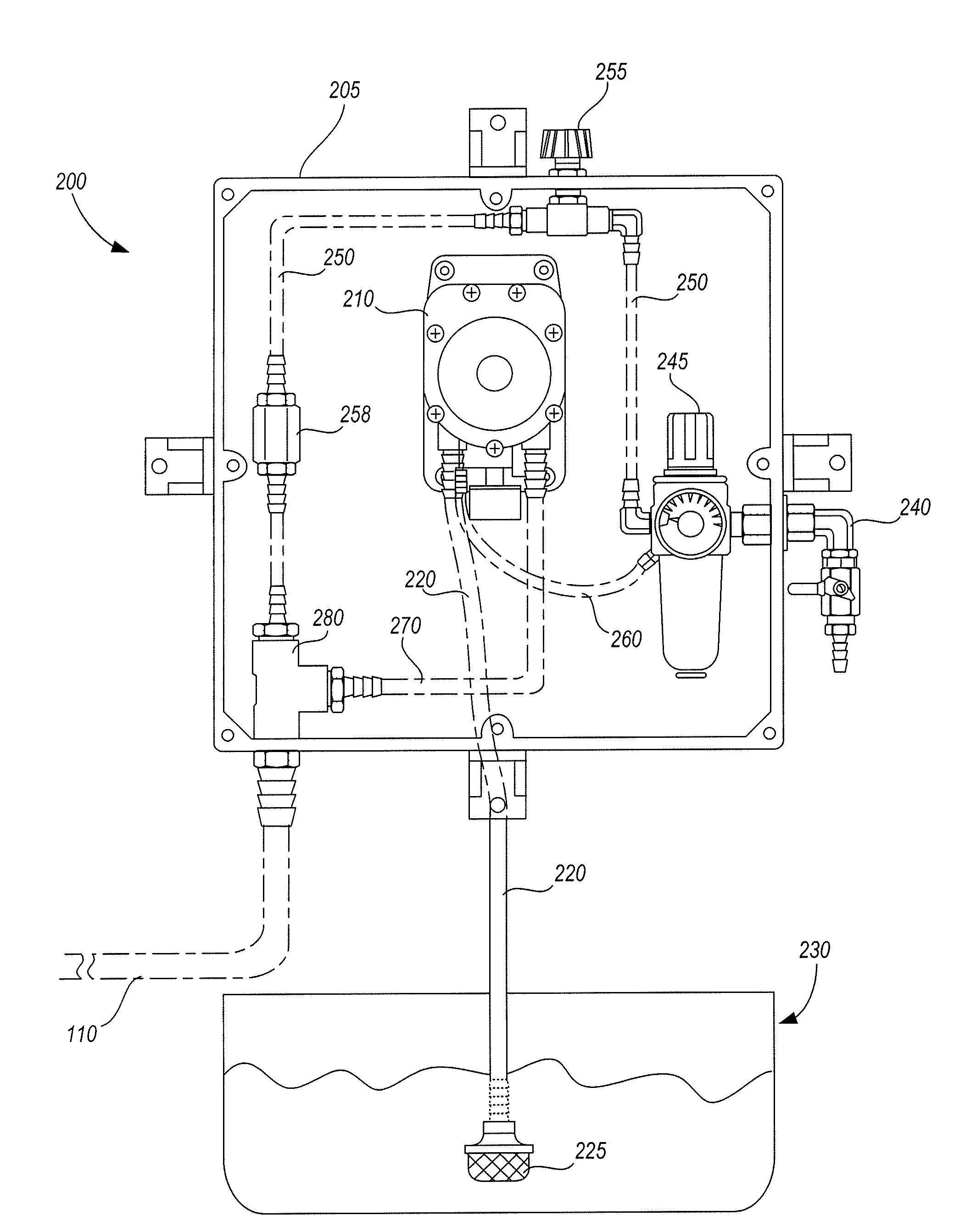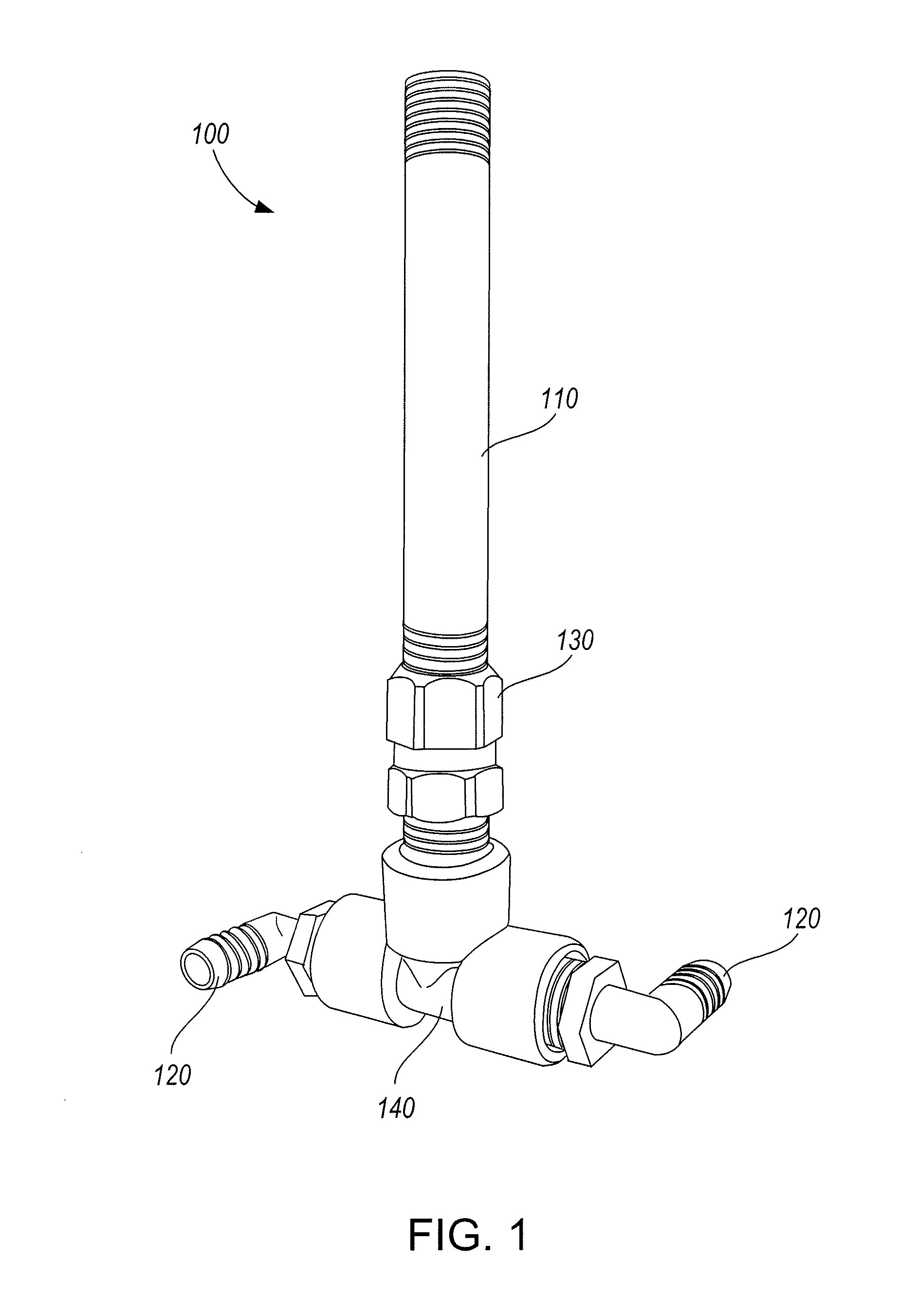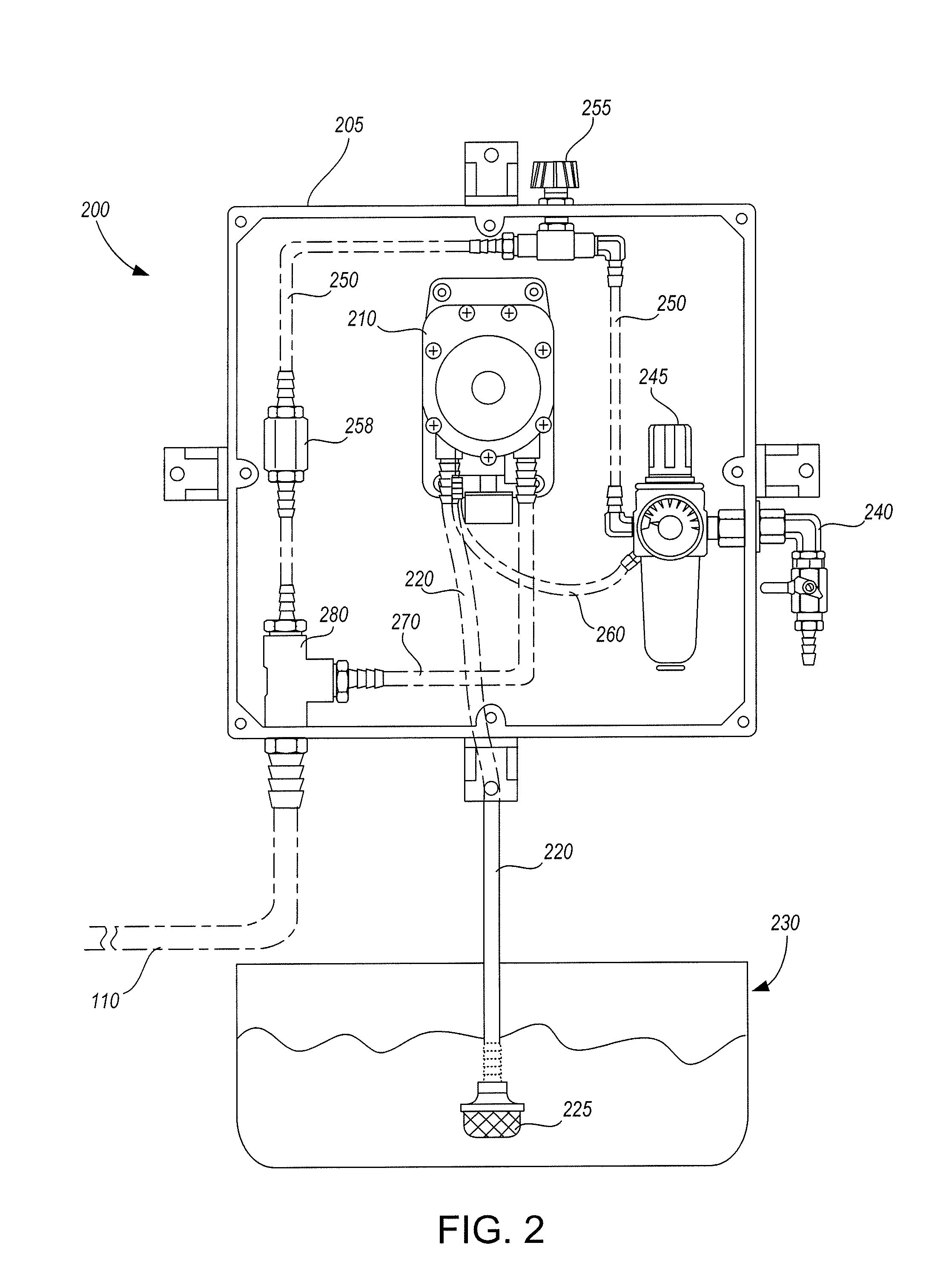Remediation of waste water
a technology of waste water and remediation, applied in the direction of water/sewage multi-stage treatment, other chemical processes, separation processes, etc., can solve the problems of reducing the flow of waste water, clogging and possible overflow, and posing a risk to public health, so as to promote the remediation of waste water, enhance the removal of contaminants, and promote the effect of removing contaminants
- Summary
- Abstract
- Description
- Claims
- Application Information
AI Technical Summary
Benefits of technology
Problems solved by technology
Method used
Image
Examples
example 1
[0067]A composition having about 54% by weight of T-Tergamide 1CD, about 13% by weight of Tergitol NP-9, about 13% by weight of T DET A 826 and about 20% by weight of Amphosol 2CSF was prepared by mixing T-Tergamide 1 CD, Tergitol NP-9 and T DET A 826, and then slowly adding Amphosol 2CSF to this mixture. Approximately 1.25 gallons of this composition was diluted in a 55-gallon drum with 53.75 gallons of water, such that the concentration of the composition in the drum was approximately 2%.
example 2
[0068]A lift station approximately 12 feet by 30 feet in size, with a volume of 1.5 million gallons a day, had a 12-inch cake of grease and other solids covering its entire surface, corresponding to a volume of approximately 360 cubic feet of grease and solids. The lift had very low velocity and almost no turbulence of the contents. When the lift was pumped down, a “shoe” of grease extended from the wall approximately 12 inches around the perimeter at the high water mark. Floats and other equipment in the station were covered with grease. Due to the design of the pumps, they required 3 feet of head above their top, and as a result a complete pump-down to rid the lift of loosened FOG, solids and accumulated latex was not possible. Strong odors in the vicinity of the lift station resulted in numerous complaints from nearby residents.
[0069]The composition of Example 1 was applied approximately daily for a 28-day trial period, first at a hatch at the outflow end of the lift and then, wh...
example 3
[0071]A lift with a diameter of approximately 5 feet and a volume of 2 million gallons a day had a 39-inch cake-covered well, corresponding to a volume of approximately 64 cubic feet of grease and solids. Three high-velocity lines with 8 inch diameters entered the lift at varying heights, providing for turbulent flow. The station had grease accumulation on the walls, ladder, float switches, and other station components, as well as a “shoe” around the perimeter of the lift.
[0072]The composition of Example 1 was applied directly to the cake approximately daily for a 29-day trial period. For the first 10 days approximately 20 gallons of the diluted composition of Example 1 were applied daily, for the next 9 days approximately 15 gallons a day were applied, and for the final 10 days approximately 5 gallons a day were applied.
[0073]Within five days of beginning the trial, the cake was nearly gone. No odors were detected at the station other than a slight, non-offensive, “dirty dish water...
PUM
| Property | Measurement | Unit |
|---|---|---|
| surface area | aaaaa | aaaaa |
| pressure | aaaaa | aaaaa |
| pressure | aaaaa | aaaaa |
Abstract
Description
Claims
Application Information
 Login to View More
Login to View More - R&D
- Intellectual Property
- Life Sciences
- Materials
- Tech Scout
- Unparalleled Data Quality
- Higher Quality Content
- 60% Fewer Hallucinations
Browse by: Latest US Patents, China's latest patents, Technical Efficacy Thesaurus, Application Domain, Technology Topic, Popular Technical Reports.
© 2025 PatSnap. All rights reserved.Legal|Privacy policy|Modern Slavery Act Transparency Statement|Sitemap|About US| Contact US: help@patsnap.com



